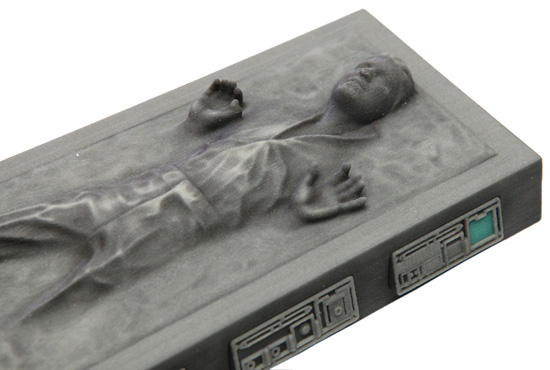I’ve written plenty about 3D printing, and any number of laser scanning professionals have wondered why. Many of you are on board with me when I say 3D printing will drive the market for 3D data (as judging by the poll respondents on our home page), but plenty more think it’s a technology that has been around for years, and still hasn’t taken off. Why now?
Well, because 3D data capture is taking off! (That’s me being ironic – see yesterday’s post.)
Obviously, the printing technology is improving as well, but many of the gains I’m seeing in 3D printing are related to two things: 1. The increased availability of relatively cheap software with which you can create 3D designs that are printable. 2. The increased availability of systems that allow you to capture reality relatively cheaply and accurately.
The first is sort of obvious and means the world will never have a shortage 3D printed bracelets and iPhone covers. But the second is just sort of creeping up on us.
Certainly the news that an entertainment giant like Disney is getting on board is a sign that capture-to-print is gaining steam. Not unlike a cool souvenir offered at the Super Bowl a couple years back, Disney launches today at Disney’s Hollywood Studios a keepsake whereby you can have your face scanned and then swapped out with Harrison Ford-as-Han Solo so that it can be you frozen in carbonite and hung on the wall of Jabba the Hutt’s den of sin.
No, seriously, this could be you, for just $99:
It sounds like they’re using a version of the Shape Shot technology
At the Carbon-Freezing Chamber (located adjacent to The American Idol Experience), several cameras will capture multiple angles of your face. The images are then reconstructed in a computer for processing, and in approximately four weeks, the completed figurine is shipped directly to your house.
Man. Just imagine the 3D printers that would have to be cranking 24/7 to accommodate all those people going through Disney (reservations are required, so they’re clearly making sure they’ve got capacity at roll out). Someone made themselves a nice sale!
And I know what you’re thinking: “More toys! I’m trying to scan a bridge over here. What do I care about pretending to get captured by Boba Fett?”
Well, maybe you might find it interesting that one blogger, after checking out the AIA convention, is openly wondering: “In architecture, is 3D printing the new normal?“
To quote: “When it comes to computing, the buzz at this year’s AIA convention is all about three-dimensional process: 3D CAD, building information modeling (BIM), and – more than ever before – 3D printing.”
The author then goes on to outline all the drawbacks, cost highest among them. But why is 3D printing becoming more of a de facto need for architects? Because they’re designing in 3D! You can’t print out your 2D drawings, obviously. Really, the technology for 3D printing isn’t that much different than it was 10 years ago (I’ve seen the cheesy morning news show footage to prove it, but my YouTube searching abilities are failing me at the moment), but it’s much more commonplace for architects to be designing in Revit or other 3D software and to have the inclination (if not yet the ability, necessarily) to just hit print when the design is done.
Here’s more on the feasibility of the workflow:
“Now that we have our design drawn in a software package that can handle 2D and 3D representation, wouldn’t it be great if we could hit ‘3D print” and have our design 3D printed to scale?” asks New York based architectural designer and 3D expert Piet Meijs with Rietveld Architects, which uses a 3D printer from Objet. ”That would be great, but unfortunately the technology isn’t there yet.”
I doubt too many architecture firms have a copy of 3DS Max sitting around at the moment, but it might become much more common.
Regardless, if the competition is making a presentation with a cool 3D printout, you better believe each architecture house is going to start to feel the pressure to not show up with some stuff carve out of foam. And if they feel as though they need 3D printing, they’re going to know they need to be designing in 3D. And if they’re designing in 3D, you know they’re going to want to start with as-built conditions when they’re doing a renovation or addition of any sort.
And that means they’re going to need some laser scanning work done.
See how that works?






